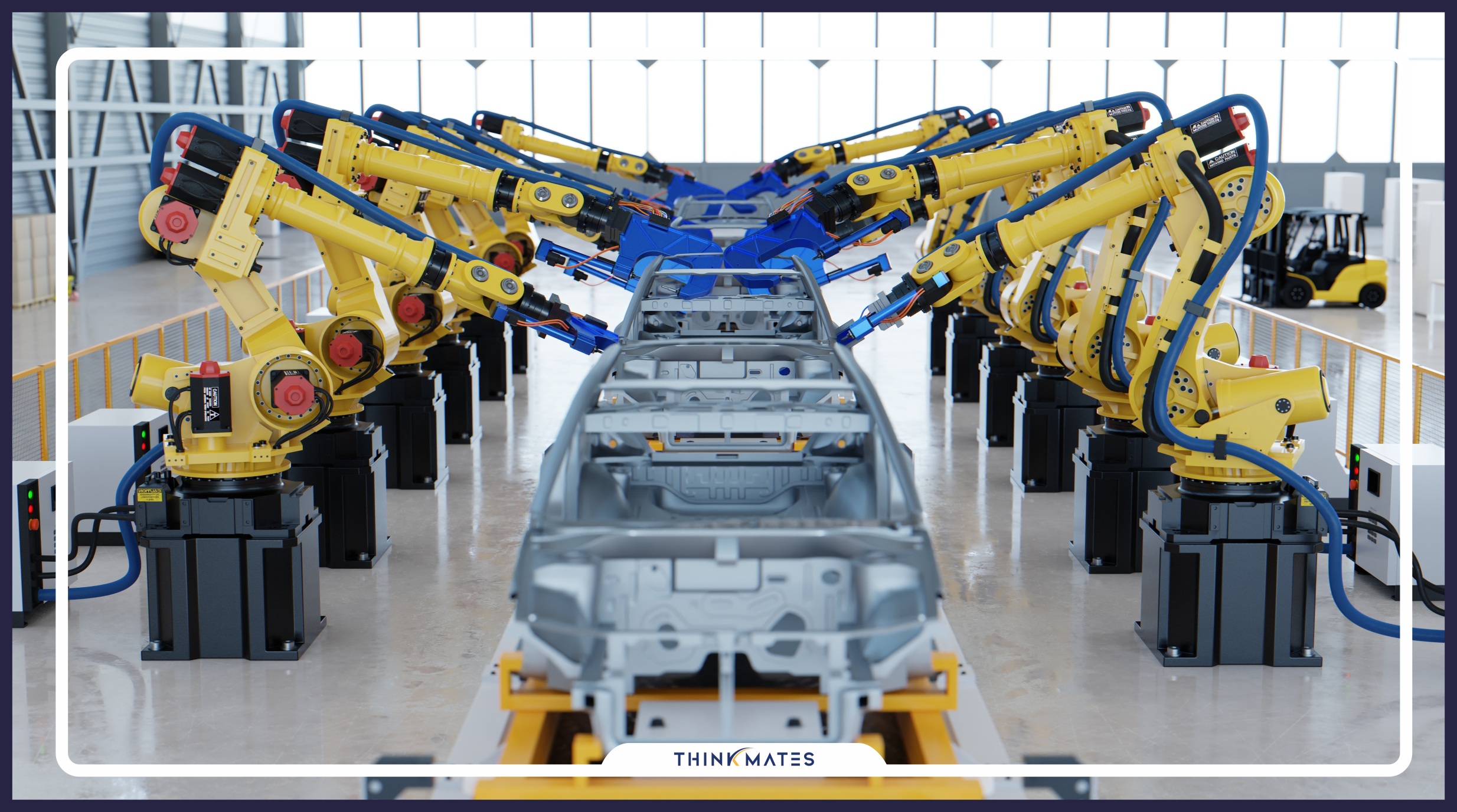
These top applications of robotics are driving Transformation in the automotive industry
For more than 50 years, the automotive industry has been using robots in their assembly lines for a variety of manufacturing processes. Today, automakers are exploring the use of robotics in even more processes. Robots are more efficient, accurate, flexible, and dependable on these production lines. This technology has allowed the automotive industry to remain one of the most automated supply chains globally, and one of the largest users of robots. With thousands of wires and parts in every vehicle, it takes a complex manufacturing process to get components to where they need to be.
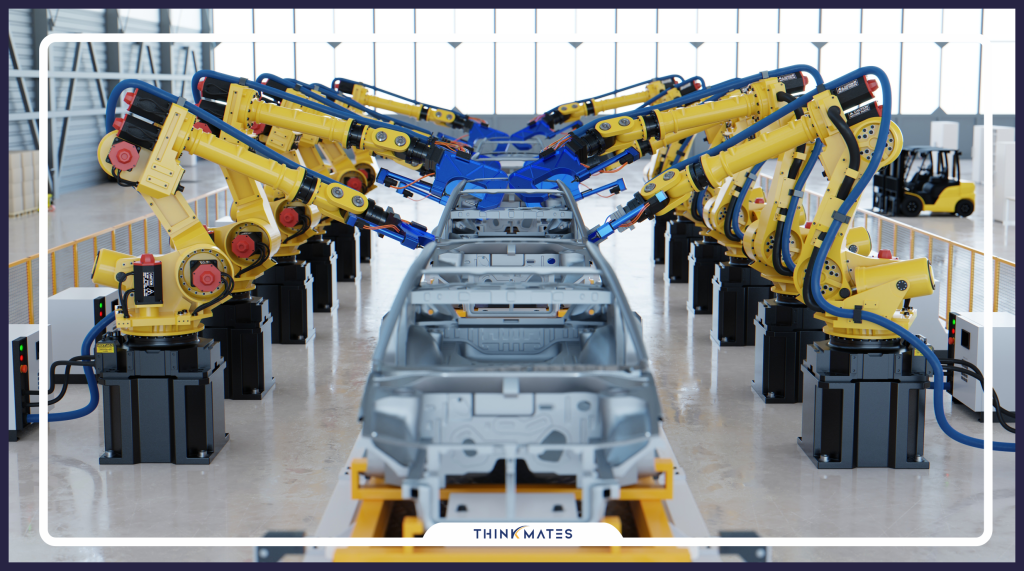
Robotic vision
A light industrial robotic arm with “eyes” can do more precise work because it can “see” what it’s doing. The robot wrist carries the laser and camera array that gives the machine instant feedback. Robots can now perform proper offsetting when installing a part because they know where it goes. Installation of door panels, windshields, and fenders are more accurate with robotic vision than regular robot arms.
Spot and arc welding
Large industrial robots with long arms and higher payload capabilities handle spot welding on heavy body panels. Smaller robots weld lighter parts such as mounts and brackets. Robotic tungsten inert gas (TIG) and metal inert gas (MIG) welders can position the torch in the exact same orientation on every cycle. Preserving high welding standards in every fabrication is doable due to the repeatable arc and speed gap. Collaborative robots work together with other large industrial robots on massive assembly lines. Robotic welders and handlers must collaborate to keep the assembly line moving. Robot handlers need to place panels at the precise location so the welding robot can perform all the programmed welds.
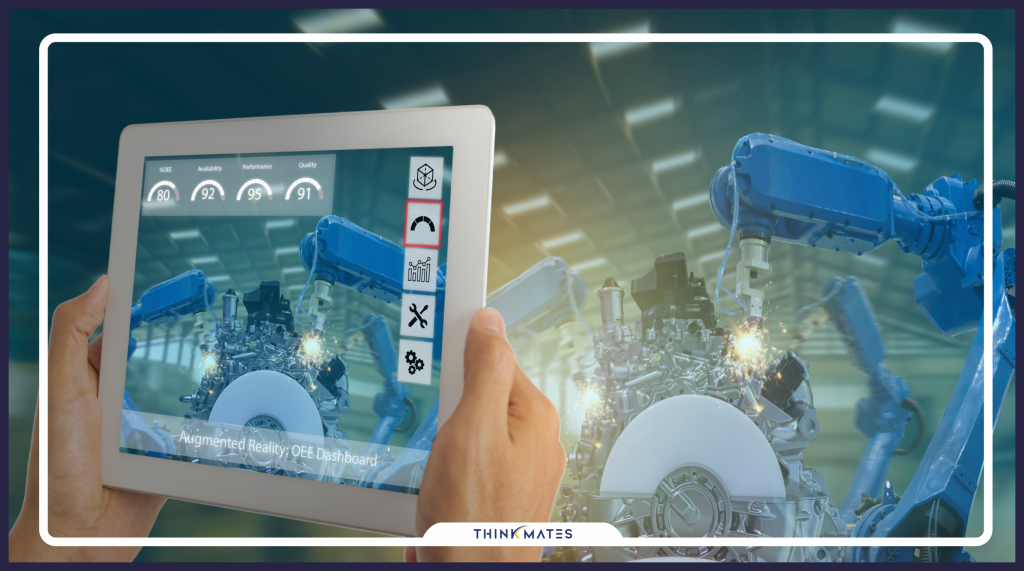
Assembly
In the process of assembling mechanical parts, there is a huge impact of using robotics. In most automotive manufacturing plants, light robotic arms assemble smaller parts such as motors and pumps at high speed. Other tasks, such as screw driving, wheel mounting, and windshield installation, are all done by robot arms.
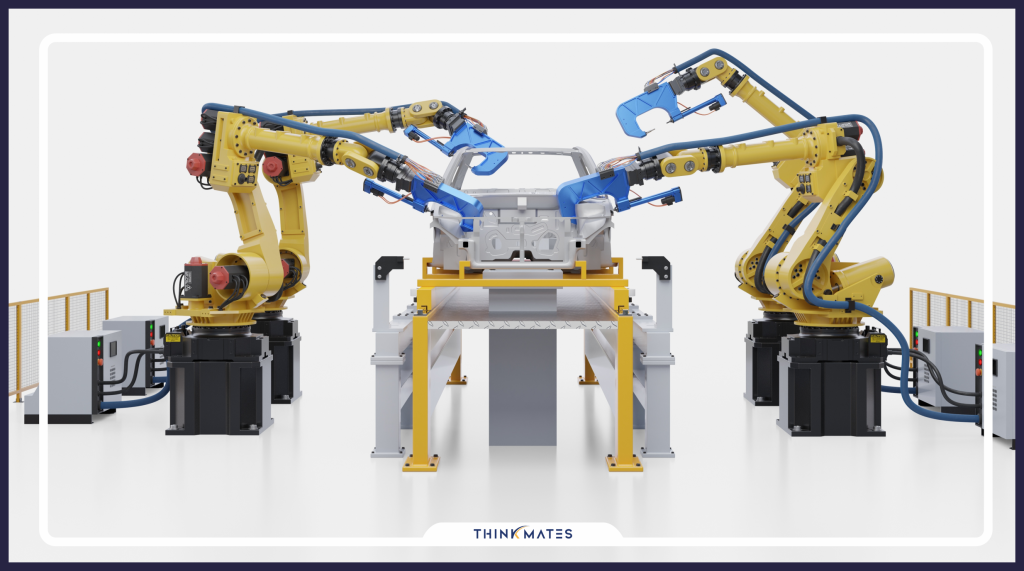
Painting, sealing, and coating
An automotive painter’s job is not easy, and it’s very toxic to boot. Labour shortages are also making it harder to find skilled, professional painters. Robotic arms can fill in the void because the job entails consistency for each coat of paint. Robots can follow a programmed path, consistently covering large areas and limiting waste. Machines are also useful for spraying adhesives, sealants, and primers.
Part/Components transfer
Transferring metal stamps, loading and unloading CNC machines, and pouring molten metal in a foundry can often be dangerous for human workers. There have been many accidents in this sector because of it. This type of work is perfect for large industrial robots. Machine tending and loading/unloading tasks are also being done by smaller cobots for smaller manufacturing operations
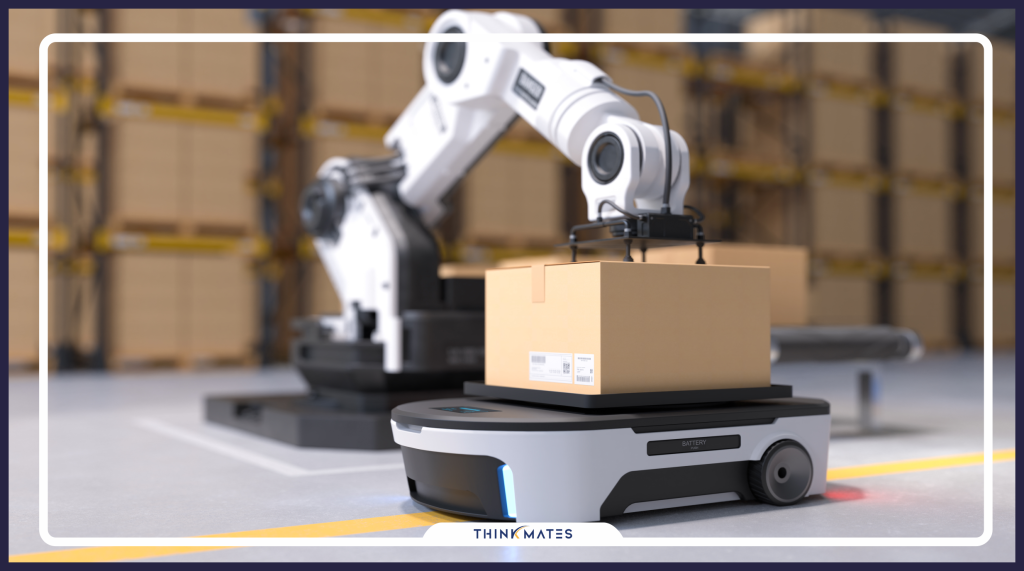
Materials removal
Robots can follow a complex path multiple times without falling, making them the perfect tool for cutting and trimming jobs. Light robots with force-sensing technology are better suited to this type of work. Tasks include trimming flash from plastic mouldings, polishing moulds, and cutting fabric.
Internal logistics
Autonomous mobile robots (AMRs) and other automated vehicles, such as forklifts, can be used in a factory setting to move raw materials and other parts from storage areas to the factory floor. In Spain, for example, the Ford Motor Co. recently adopted AMRs from Mobile Industrial Robots (MiR) to deliver industrial and welding materials to various robot stations on the factory floor, replacing a manual process.
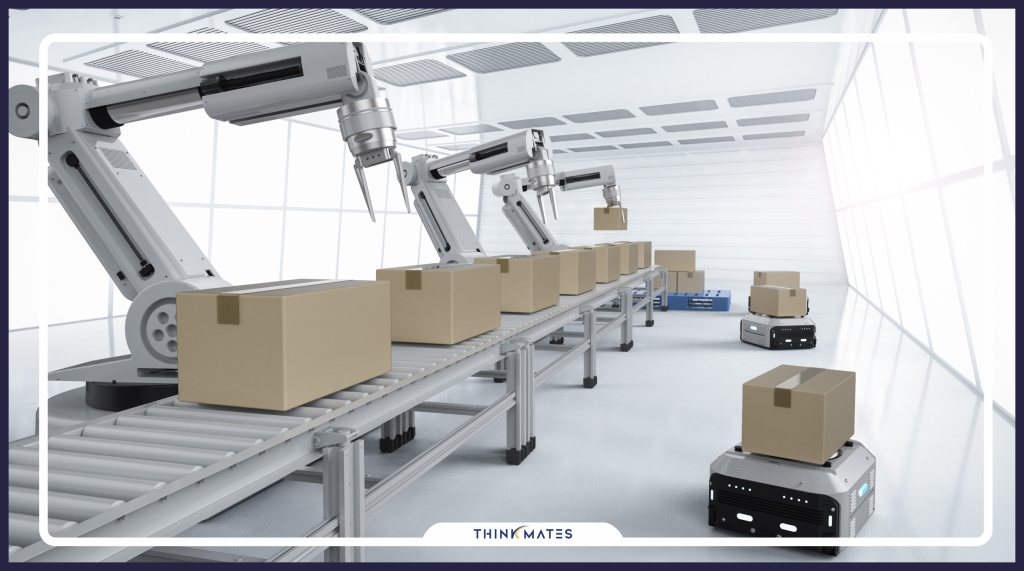
Polishing robots
Parts polishing are important processes in vehicle production. These processes include cleaning up automotive parts along the way by trimming metal or polishing molds for smooth finishes. Like many tasks in car manufacturing, the tasks are repetitive and sometimes dangerous, creating an ideal opportunity for robotic intervention. Material removal tasks include grinding, deburring, milling, sanding, routing and drilling.
Machine tending
Machine tending is one of those tasks that’s ideally suited to collaborative robot-powered automation. Dull, often dirty and sometimes dangerous, it’s no surprise that over recent years machine tending has emerged as one of the most popular applications for cobots.
Quality inspection
Quality inspection processes can make the difference between successful production runs and expensive, labour-intensive failures. Cobots are used by the automotive industry to ensure product quality. UR+ provides a wide variety of hardware and software specially designed to help you automate your automotive quality inspection tasks, including cosmetic optical inspection and metrology.
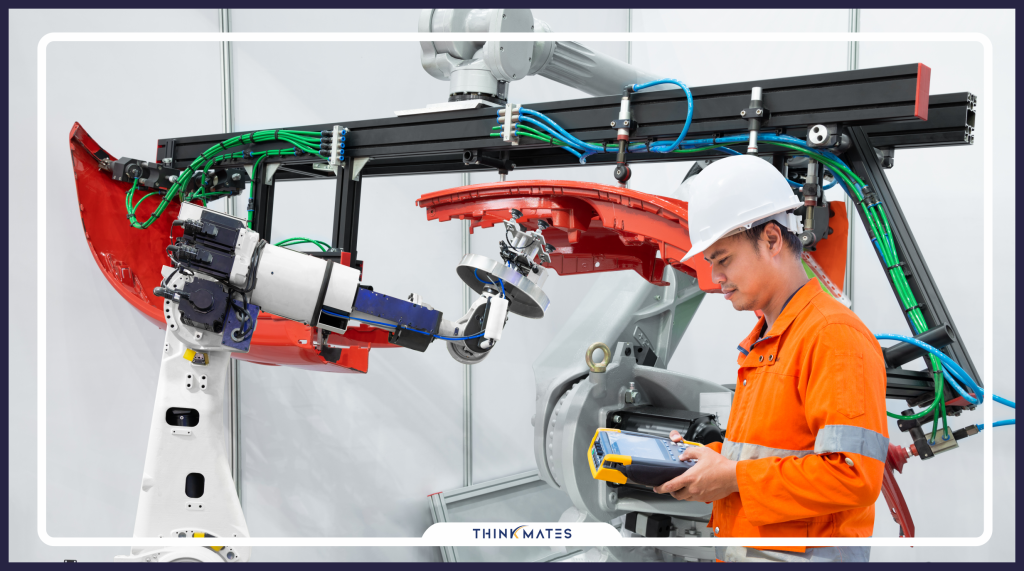
The Future Outlook
Artificial intelligence (AI) systems will become the norm in automotive manufacturing over the next decade. Machine learning is set to improve every area of the production line and manufacturing operations overall. Over the next few years, it is certain that robotics will be used in working toward creating automated, or self-driving, vehicles. Using 3D mapping and road traffic data will be essential in creating safe self-driving cars for consumer use. As automotive manufacturers seek to innovate their products, their production lines will have to be innovated too.


